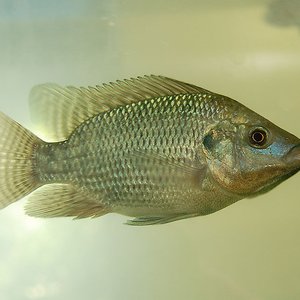NIFES report: Determination of undesirable substances in fish and fish products
The National Institute of Nutrition and Seafood Research (NIFES) has determined the content of certain undesirable substances in marine oils for human consumption and in selected fish and fish products. The results show low levels of the contaminants in mackerel and a generally low level of dioxins and dioxin-like PCBs in oils for human consumption. Of 25 samples of eel, 12 had a level of dioxins and dioxin-like PCBs which exceeded EU’s upper limit for these substances.
Due to environmental pollution, contaminants can occur in seafood. In the project “Analysis of undesirable substances in in fish and fish products” NIFES has analysed random samples of selected fish species and fish products on behalf of the Norwegian Food Safety Authority. Samples of mackerel and eel were collected from “The Grenlandsfjord” and adjoining areas along the coast of Telemark. These areas are surrounded by potentially polluting industrial activity.
Marine oils for human consumption
Data from previous years’ research activity shows that, in addition to oily fish and seafood products, cod liver oil and other marine oils are exposed to the accumulation of fat-soluble organic toxic substances such as dioxins and dioxin-like PCBs. A total of 15 samples of fish oil and six samples of seal oil were analysed this time. The total level of dioxins was below the EU’s upper limit of 2.0 ng TEQ/kg for all of the 21 samples analysed. One sample exceeded the Norwegian upper limit of 5 ng TEQ/kg for total dioxins and dioxin-like PCBs, and also higher than EU’s upper limit of 10 ng TEQ / kg fat. Marine oils are cleansed to remove undesirable substances prior to consumption. As the data on dioxins and dioxin-like PCBs in food is very limited in both Norway and the EU, it is important to increase our knowledge of the presence of these substances in a variety of samples including seafood.
Low levels of contaminants in mackerel and fish sandwich spread
The level of heavy metals, brominated flame retardants (sum PBDE7 and total HBCD), dioxins and dioxin-like PCBs in five pooled samples of mackerel from the Grenland fjord and surroundings areas along the coast of Telemark was low, and the concentrations were comparable with the concentrations in mackerel caught in the open seas such as the North Sea and the Norwegian Sea (see the database Seafood Data).
Also the level of undesirable substances in the two pooled samples of the fish sandwich spread ”Svolværpostei” was well below EU’s upper limits for undesirables were such limits prevail.
High dioxin content in samples of eel
The level of the heavy metals cadmium and lead in 25 samples of filet of eel from the Grenland area was below the EU’s upper limit. This was also the case for mercury, but there are more mercury present in the eel sampled in the Grenland area compared to what is found in eel sampled from unpolluted areas.
Twelve of the 25 samples of eel analysed had a level of dioxins and dioxin-like PCBs that exceeded EU’s upper limit of 12 ng TE per kg wet weight. In the samples taken from the Eidangerfjord the concentration of dioxins was more than 10 times higher than the EU’s upper limit of 4 ng TE per kg wet weight.
The level of dioxins and mercury in the samples analysed, especially the level in eels caught in the Eidangerfjord, indicates that there is a source of pollution in the area.
The Norwegian Food Safety Authority has given dietary advice related to seafood caught in The Grenlandsfjord and adjoining areas. The advice is against consumption of eel from these specific locations.
The Norwegian Director General of Fisheries proposes a ban on all catches for commercial and leisure purposes of European eel in Norway effective from 2010.
Contact person: Kåre Julshamn, Surveillance Research Programme: email .







